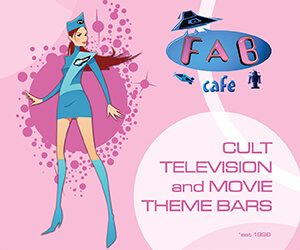Today’s Doctor Who fans can find out the latest news, views, and opinions – oh, yes, the opinions – at the click of a mouse. Doctor Who fandom largely lives online these days, for better or (all too often) for worse. But it wasn’t always this way. Although there were some early iterations of Doctor Who fan activity in the 1960s and into the early 1970s, it was only in the mid-’70s that properly organised fan appreciation of the series began, largely due to Tom Baker’s hugely popular student-centric portrayal of the Doctor as an iconoclastic and unpredictable free-thinker with precious little respect for authority figures.
The Doctor Who Appreciation Society (DWAS) arrived in 1976 and quickly gained official recognition from the BBC Doctor Who production office as it published monthly newsletters and its fan magazine, TARDIS. This “centralisation” of fan activity encouraged Who devotees all over the country – all over the world – to produce their own magazines (some of which were little more than pamphlets at first), and an explosion of titles arrived in the late 1970s and well into the 1980s. Fans, many of them enthusiastic teenagers with access to crude photocopying and duplicating facilities, would discover and debate the history of the show, conduct interviews with cast members old and new, create often-impressive art inspired by the series and as the years rolled by and printing facilities became more sophisticated the early crudely-compiled and stapled magazines became ever more professional. Alistair McGown’s extraordinary – and huge – new book commemorates and explores this very particular era in Doctor Who fandom; 21st-century fans will look on in bafflement and astonishment at the book’s pages and pages of illustrations of magazines that, to them, might as well be cave-paintings. But for those fans who were there – this writer included – this is a massive and delightful nostalgia hit, a reminder of more innocent and enthusiastic times and page after page rolls by with a gasp of “I remember that one!” or “I used to get that one!” as the covers of long-forgotten and discarded primitive magazines, gorgeously reproduced across the book’s generous 280-plus pages, loom from its glossy pages.
The book’s text is necessarily dense and dry, chronicling the comings and goings not only of various magazines but also those fans who worked on them, but it’s also intricate, immaculately researched and generally presented with only the slightest of critical opinion. The development of the DWAS is fairly central to the book as the Society was very much the hub around which the rest of this independent, underground fandom revolved, but it’s extraordinary to be reminded of this explosion of Who-inspired creativity and fascinating to see how those early crude publications either floundered and fell by the wayside or flourished into more professional, slicker product that would often rival the likes of the rapidly-established newsstand Doctor Who Weekly/Magazine. If we’ve any real criticism of the book, then it’s a little frustrating to see McGown writing about magazines and referring to their content or inner layout without any reproductions illustrating his point, but then to do so would probably have required a book twice the size.
Tiny reservations aside, The Fanzine Book really is a remarkable piece of work, an invaluable snapshot of a very specific time in Doctor Who fandom, an era where the written word was king (supported by often very decent artwork) and the magazines commemorated here encouraged many of their contributors to take up carers in journalism and script-writing or else to express their creativity in other mediums. It’s a book best appreciated by those who were there, but some of today’s keyboard warriors could learn a thing or two from its enduring story of proper fans with a yearning to express their passion constructively instead of spitting empty venom into cyberspace in the name of clickbait. Hugely recommended.

The Fanzine Book is available now from Telos Books.








